
Shaku Nair and Dawn H. Gouge
Department of Entomology, University of Arizona
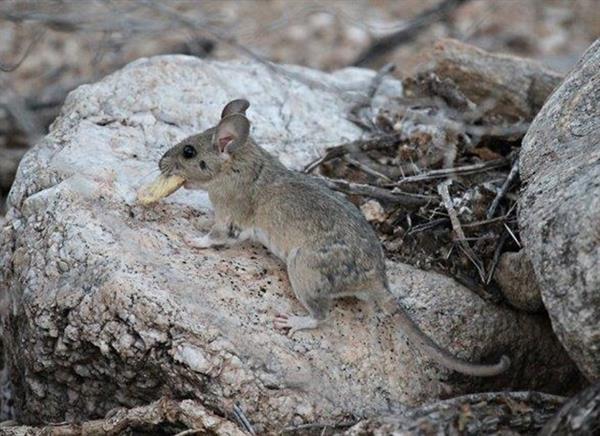
Figure 1. Desert wood rat near midden. Photo: Dick Hartshorne, SearchNet Media.
Rodents are mammals belonging to the order Rodentia, and most U.S. rodent species are small, furry animals with short legs and a long tail. The characteristic common to all rodents is their continuously growing front teeth. They have one pair of upper and lower incisors that they use to gnaw on things, which enables them to taste substances and determine if they are edible or not. The front teeth have a layer of hard enamel on the front surfaces and softer dentine on the back, so their constant gnawing action sharpens the teeth continuously. Rodents are primarily nocturnal but can be active during daylight hours. They do not hibernate but are less active during cold months.
Most rodents have the potential to carry disease-causing pathogens, and for this reason, they should not be handled without protective gloves. Mice and rats are common rodents encountered in community environments and many species have evolved to live commensally with humans to such an extent that they may not survive in natural environments in the absence of humans. While native species can also sometimes decide to live “with us”, they do not necessarily need to live near humans to survive.
Commensal rodents that live in close association with humans are dependent on humans for food, water, and shelter. House mice, roof rats, and Norway rats are three common species found in many parts of the world.
In the desert southwestern U.S., there are several native rodents that are encountered in community environments. This newsletter will cover some of these non-commensal rodent species.
Pack rats (also called wood rats or trade rats) are medium sized rodents belonging to the genus Neotoma. The white-throated (N. albigula), desert (N. lepida), dusky-footed (N. fuscipes), Mexican (N. mexicana), bushy-tailed (N. cinerea) and Stephen’s (N. stephensi) pack rats are commonly encountered in Arizona and other parts of the desert southwest.

Figure 2. Bushy-tailed wood rat. Photo: U.S. National Park Service.
Adult pack rats are much larger than house mice and resemble roof rats in general size and shape but can be distinguished by the long tail covered with fur or long hairs, larger eyes and ears, and a generally clean, soft appearance. Their fur is soft and may be colored cinnamon, brown, gray, yellowish gray, or creamy buff on the upper side of the body. The lower side of the body and feet are generally much lighter. The tail fur may be slightly darker than the rest of the body and is paler on the underside. External ears are large, rounded, and hairy; eyes are large and dark and somewhat slanting and deeply set into the face. Body sizes range from 12-14 inches including the tail, the body alone can be 6-7 inches in length.
Pack rats can be a nuisance, largely due to their gnawing and nesting habits (Figure 3), but also because their middens (nests) are common breeding sites for kissing bugs. If their midden is under or against a home, the bugs can sometimes crawl in through cracks and crevices and will bite humans. People who are sensitive to the bites can develop increasingly severe allergic reactions that can become life-threatening. Additionally, white-throated pack rats are reported to be carriers of arenaviruses that can infect rodents and occasionally, humans. People become infected by breathing in the virus after rodent urine, droppings, or nesting materials are disturbed during cleanup efforts or structural modifications of buildings. Pack rat nests are also known to harbor many parasitic mites, ticks, fleas, and other ectoparasites on their bodies and in their nests. Pack rats sometimes feed on and damage garden and landscape plants. Occasionally they cause damage to vehicles and wiring in homes.

Figure 3. Pack rat midden among cacti. Photo: Cliff Hutson.
Pack rats are primarily nocturnal and solitary animals, except when mating or rearing young. However, they are known to build nests close together, forming a community. They are proficient diggers and climbers, usually building extensive above-ground dens but will sometimes opportunistically move into the attics and walls of houses. Their nests, called dens or ‘middens’, are complex structures consisting of several chambers, with piles of stored food and debris. They can be built on the ground, among rocks or tree bases, or among tree branches, or in abandoned nests and burrows of other animals. In the desert, packrat dens are common in cholla cactus bases, using the cactus spines as a protection from predators (Figure 3). Ground dens measure 3 to 5 feet in height and diameter; tree nests are somewhat smaller. One animal may inhabit several nests, and in good feeding areas, a den may be occupied for several years or a lifetime. Packrats are known to use aromatic plant leaves to line their nests to keep out parasites. They are also very attracted to small, bright, shiny objects such as coins, small pieces of jewelry, broken bits of mirrors, metal spoons, etc. and often pick these up, leaving sticks, nuts, cactus pieces or other materials in ‘trade’. Breeding usually occurs in early summer and females can produce up to 5 litters per year, each with 4-5 young. The young ones become sexually mature in 2 months. The average lifespan is about 1-2 years.
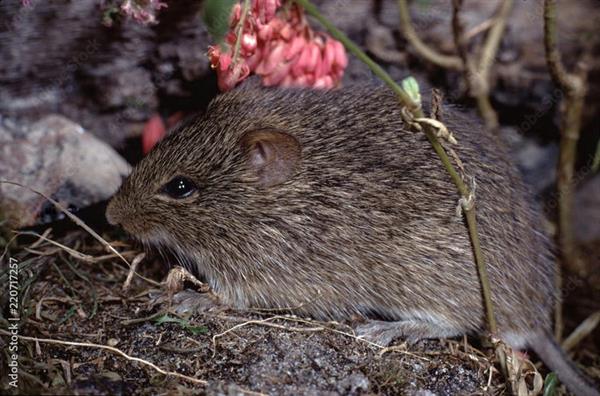
Figure 4. Hispid cotton rat. Photo: Adobe Stock Images
Cotton rats are small to medium sized, grayish-brown rodents. Adults measure about 6-12 inches from nose to tail. Sizes and appearances vary with the habitat. Arizona is home to several native cotton rat species including the Arizona (Sigmodon arizonae), yellow-nosed (S. ochrognathus), tawny-bellied (S. fulviventer), and hispid (S. hispidus) cotton rats. Cotton rats are agricultural pests, and are found on the fringes of urban areas, but relatively rarely found in the built environment.
They are best identified by their small, rounded bodies and the fur color on the upper side of the body is often a coarse mixture of tan, brown and black; the lower sides being pale gray or white. The tail is short, often shorter than the length of the head and body combined. An additional characteristic feature of Sigmodon hispidus is the ‘S’-shaped crown pattern on the second and third molars (Figure 5).
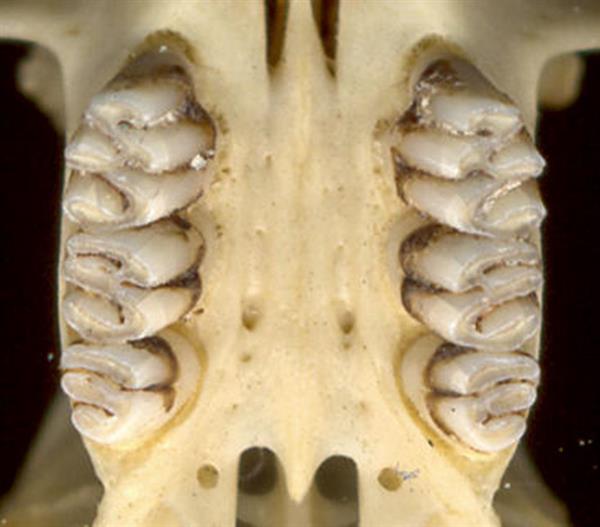
Figure 5. ‘S’-shaped crown pattern on the second and third molars of a hispid cotton rat.
Source: https://www.utep.edu/leb/pleistnm/taxamamm/Sigmodon.htm
Cotton rats do not generally cause direct impacts on humans but can feed on and damage several garden and landscape plants, as well as agricultural crops. They can occasionally cause damage to grasses, fleshy roots and tubers and fruits, resulting in reduced yields. Crop damage is related to their population densities, which fluctuate throughout the year.
They can harbor various parasites such as insects, mites, pathogenic bacteria, tapeworms, and other worms on their bodies, which can be transferred to humans and domestic animals. They are also known to compete with some native fauna such as the bobwhite quail for food resources, and feed on quail eggs.
Cotton rats are largely nocturnal in the wild but can be active throughout the day in urban settings, mainly from late afternoon to midnight. They construct nests using various plant materials under logs and rocks for protection, or abandoned dens of larger mammals such as skunks or squirrels. They also construct an elaborate system of runways and tunnels below the ground surface. Main runways are regularly maintained by trimming away grasses and weeds and piling them along the sides. Breeding can occur throughout the year. Females usually produce 1-2 litters per year. Their average lifespan is about 6 months. Cotton rats rarely invade buildings, although they can be found in storage sheds and barns and may take refuge in winter homes and cabins that are undisturbed for some time. When seen around homes, they are generally associated with lawn areas and gardens. Their home range is small, generally 0.25 – 0.75 acres for females and 1 – 1.25 acres for males. Cotton rats do not store food or hibernate.
Our publication Roof Rats: Identification, Ecology and Signs discusses various aspects of the biology and behavior of pack rats and cotton rats, as compared to roof rats. Read the publication here https://extension.arizona.edu/sites/extension.arizona.edu/files/pubs/az1775-2018.pdf.
Kangaroo rats derive their name from their large hind feet that are adapted for hopping or jumping. They are small nocturnal rodents measuring 3-5 inches excluding the tail. The tails are longer than the body, measuring 5-6 inches in length, with a tuft of hairs at the tip. They have sandy brown colored fur, with white underbellies. Their heads are large for their body size, with large eyes and small ears. They have cheek pouches that are used to store food while foraging.
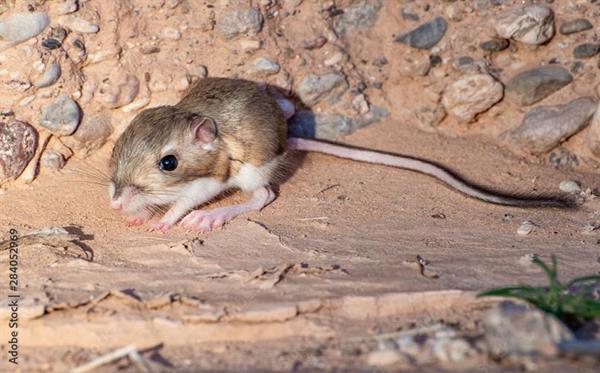
Figure 6. Merriam’s kangaroo rat. Photo: Adobe Stock Images.
Their best identifying characters are their large hind feet, small front feet, and their long tail terminating with longer hair (Figure 6) or in a fluffy tuft of hair.
Kangaroo rats are rarely encountered indoors. They are extremely well adapted to live in arid environments, deriving moisture from their diet which consists predominantly of seeds, and occasionally green vegetation or small arthropods.
Population numbers are influenced by several factors including predation, food availability and competition from other rodents. High populations of kangaroo rats occur when rangelands have been overgrazed, leaving large-seeded annuals which are their preferred food. They can be pests of crops such as alfalfa, corn, sorghum, and other grains.
Kangaroo rats are mostly nocturnal, staying within their burrows during the daytime. They excavate their burrows themselves, often at the base of a desert shrub or bush that offers protection from predators. They forage in the desert at night, collecting seeds and storing them in their cheek pouches to bring them back to their burrows.
A pair of kangaroo rats can produce 2-3 litters per year, with 3-4 pups in each. Their average adult lifespan is around 2 years.
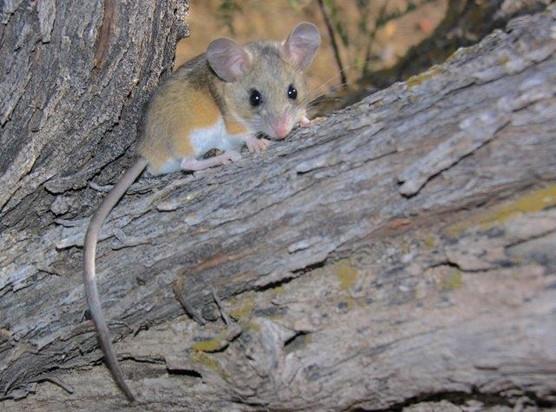
Figure 7. Deer mouse. Photo: Gregory ‘Slobirdr’ Smith.
Deer mice (Peromyscus maniculatus, sometimes referred to as field mice) are small, grayish yellow mice with a pointed snout, and large, black beady eyes, very similar to the house mouse. The adults measure about 5 to 7 inches including the tail, the body alone is 2 ½ to 4 inches in length. Body size can vary with the habitat.
Deer mice can be identified by their small size, pointed snout, hairless ears, long tail covered with spares fine hair. Their eyes and ears are larger than those of the house mouse. Their fur is distinctly two-toned: the upper side of the body and tail varies from light grayish brown or tan to dark brown and is clearly demarcated from the underside and feet which are white in color (Figure 7). The tail is covered with fine hairs and is not completely hairless as in the house mouse. Deer mice are excellent runners and jumpers, and run much faster and jump higher than house mice.
Deer mice are less commonly encountered indoors compared to the house mouse (Mus musculus) but do enter and infect homes and structures if they get a chance. They are more likely to do so if buildings are rarely used or left undisturbed for multiple months at a time. Once indoors, they readily consume, damage, and contaminate food, stored items, and structures in general. Outdoors, they can be a pest of agricultural crops and garden plants. They feed voraciously on seeds and also hoard them, which can lead to reduction in crop yields and regeneration of plants in the wild.
Deer mice are most important because they are principal reservoirs and carriers of the hantavirus called Sin Nombre Virus, which is the main cause of hantavirus disease in North America. For those developing hantavirus pulmonary syndrome, this is a severe acute respiratory illness with a case fatality rate that can exceed 50%. Humans can acquire the virus through breathing dust contaminated by the urine, saliva or feces of an infected rodent. Infection may also occur through broken skin, mucous membranes (eyes, nose, and mouth), and through the ingestion of food or water contaminated with urine, saliva, or feces of an infected rodent.
Deer mice are nocturnal and primarily an outdoor species by nature, spending the daytime hidden in tree holes, or underground burrows. They build small untidy nests with various kinds of plant material, near a food source and most activity is concentrated around the nest. Breeding can occur year-round but is mostly dependent on food availability. A single female can produce 4-5 litters in a year and the average adult lifespan is about 1 year in the wild.
These are small, grayish brown round-bodied rodents, with similarities to house mice and gophers, about 5-5 inches in length including the tail. Sizes and appearance can vary with the habitat. The montane vole Microtus montanus and the California vole M. californicus are common southwestern species.
In Arizona voles are rarely a problem but can cause some damage in higher elevation regions. Girdling damage and gnaw marks are similar to other rodents and small mammals. According to Jeff Schalau, Emeritus Extension Agent for Yavapai County “vole girdling is characterized by non-uniform gnaw marks which occur at various angles and in irregular patches”.
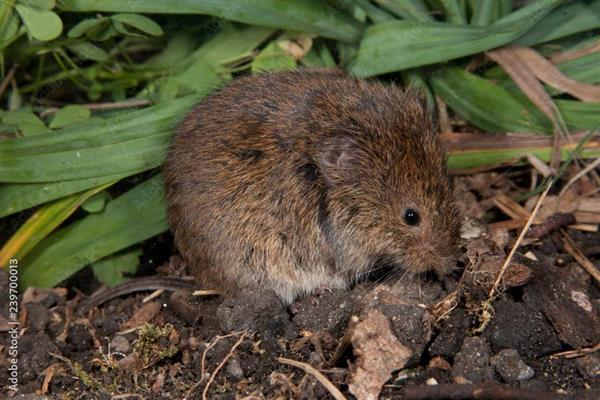
Figure 8. Meadow mouse or vole. Photo: Adobe Stock Images.
Voles are identified by their short, stout, compact body, short legs and small thin tail covered with fine fur, small eyes, small and partially hidden ears. Their fur is dark grayish brown on the upper side of the body and tail, and lighter (not white) on the undersides and flanks; but the body is not distinctly two-toned as in deer mice (Figure 8). One of their distinguishing characteristics is that their underfur is dense and covered with thicker, longer guard hairs.
Voles spend most of the daytime in their burrows underground but are active day and night year-round. They have distinct runways above ground, and these can be indicative of their activity. They try to cover runways with cut grass or other plant material, but sometimes green colored droppings can be found near burrow entrances.
In general, voles prefer areas with thick, unmanaged grass cover, but they may be encountered in gardens, fields and other wooded areas near homes and structures, but rarely indoors.
Voles are mostly crepuscular (foraging during dawn and dusk) throughout the year, and feed on different plant materials, fungi and small insects or other invertebrates. They build underground nests in their burrows, lined with plant matter. Breeding usually occurs from late spring to early fall, with 3-4 litters in a year. Their average lifespan is less than a year.Populations of non-commensal rodents around community environments can fluctuate depending on various factors. Regularly inspect landscape plants such as chollas and cacti to ensure that these rodents do not take up residence under them. Keep yards clean and free of fallen fruit, leaves and twigs and other debris, which could all serve as food and shelter sources for these rodents. Make sure landscape irrigation systems are functioning properly and repair leaks promptly.
Pest-proofing homes and buildings is the best way to keep rodents out. Make sure to seal all cracks and gaps around doors and windows, along foundations, under eaves or roofs, and around entry points of utility lines. Read more in our publication on pest proofing here: https://extension.arizona.edu/sites/extension.arizona.edu/files/pubs/az1677-2015.pdf.

Figure 9. Pest-proofing is the best way to keep rodents out. Photo: Adobe Stock Images.
If you notice or suspect non-commensal rodent activity in a building or structure, make sure to follow proper disinfection and cleanup protocols. The Centers for Disease Control and Prevention provide detailed information on rodent cleanup here: https://www.cdc.gov/healthypets/pets/wildlife/clean-up.html.

The Border Tick and Rickettsia Surveillance (BiTeRS) program of the Pacific Southwest Center of Excellence in Vector-Borne Diseases (PacVec) offers services to enhance surveillance for ticks and tick-borne pathogens of human health concern in California and Arizona. This is made possible through our project leaders at the University of California, Davis, and the University of Arizona, and collaborating local and state agencies, including the California Department of Public Health and the Arizona Department of Health Services.
We help every step of the way, and identification and pathogen testing are FREE. Collection supplies and protocols are provided, and partners receive all results on ticks they have submitted.
We work with partner organizations to:Partner organizations may be:
Download the BiTeRS Flyer for distribution: https://pacvec.us/biters/


Well Done to Master Insect Detectives:
Karen Austermiller, Yavapai County Master Gardener and Karen Kumar,
who both knew this was a Solenopsis fire ant worker.
The Master Gardeners in Yavapai County are acing the test!
OK then Yavapai Co. Master Gardeners -
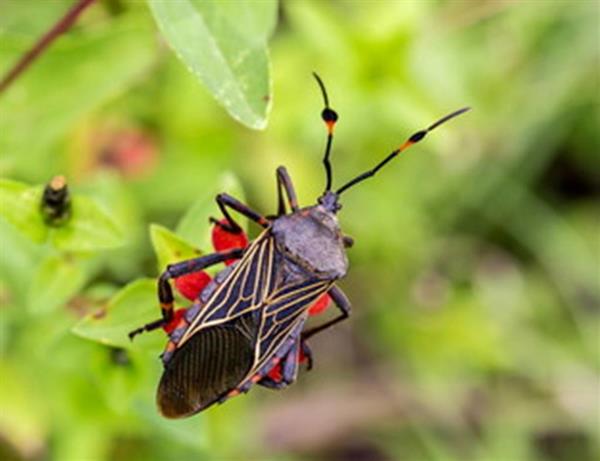
If you know the answer, email Dawn at dhgouge@arizona.edu. You will not win anything if you are correct, but you will be listed as a “Master Pest Detective” in the next newsletter issue.
Upcoming Events
Save the Date! Plant Pest and Disease Seminar at Maricopa County Cooperative Extension. Thursday, September 7th 8:00 am to 4:00 pm.
The seminar will feature a variety of talks and hands-on activities on pests and diseases of horticultural plants in Arizona landscapes; for landscapers, property managers, nursery growers and others engaged with the horticulture industry. 6 AZ Dept. of Ag. ESD (Ag.) and PMD (OPM) CEUs applied for. Registration and more information coming soon!
____________________________________________________________
Save the Date! Pest Management and Pesticide Safety Seminars for Turf and Landscapes. November 29th and 30th organized by the UA Turfgrass Science Program.
The seminars will be offered on two dates and locations, in person: November 29th in East Valley (Location TBD), and November 30th at Sun City West. Both days will feature presentations by experts on various aspects of turf and landscape pest management and pesticide safety. Six AZ Dept. of Ag. ESD (Ag.), PMD (OPM) and GCSAA CEUs will be applied for. Registration and more information coming soon!
____________________________________________________________
What’s Bugging You? First Friday Events (New York State IPM Program)
Fridays | 12:00 pm. – 12:30 p.m. EDT | Zoom | Free; registration required
In this monthly virtual series, we explore timely topics to help you use integrated pest management (IPM) to avoid pest problems and promote a healthy environment where you live, work, learn and play. What is IPM? It's a wholistic approach that uses different tools and practices to not only reduce pest problems, but to also address the reasons why pests are there in the first place. Each month, our speakers will share practical information about how you can use IPM. Register for upcoming events.
What’s Bugging You First Friday events are in Spanish this year. Individuals interested in these events can find more information on this website: https://cals.cornell.edu/new-york-state-integrated-pest-management/outreach-education/events/whats-bugging-you-webinars/conozca-su-plaga
____________________________________________________________
The IPM Institute Presents: Pest Defense for Healthy Schools Webinar: Fungus Gnats
July 27, 2023, 4:00 p.m. CST | Zoom | Free, registration required: https://bit.ly/FungusGnat
The Pest Defense team will host Nick Weiss, an AP environmental science teacher from Carrollton, TX. Weiss will describe why it was difficult for his students to see the value of learning IPM until fungus gnats started bugging them in class. He will cover fungus gnat biology, ideal growing conditions, how to limit their populations, and the IPM strategies his class used to successfully limit them in their classroom. He will also discuss how teachers can include students in the development and execution of an IPM plan.
Feel free to reach out to Lorelei D’Huyvetter at ldhuyvetter@ipminstitute.org with any questions.
Register at https://bit.ly/FungusGnat
____________________________________________________________
Urban and Community IPM Webinars University of California
UC Statewide IPM Program Urban and Community webinar series is held the third Thursday of every month to teach about pest identification, prevention and management around the home and garden. This series is free but advanced registration is required. Dates and topics below, all begin at noon Pacific. https://ucanr.edu/sites/ucipm-community-webinars/
____________________________________________________________
Urban and Community IPM Webinars (Host: University of California)
UC Statewide IPM Program Urban and Community webinar series is held the third Thursday of every month to teach about pest identification, prevention and management around the home and garden. This series is free but advanced registration is required. Dates and topics below, all begin at noon Pacific. https://ucanr.edu/sites/ucipm-community-webinars/
____________________________________________________________
EPA Webinars about Integrated Pest Management
View recordings of archived EPA Integrated Pest Management Webinars at https://www.epa.gov/managing-pests-schools/upcoming-integrated-pest-management-webinars.
For more information about the EPA Schools program: http://www.epa.gov/schools/.
____________________________________________________________
To view previous University of Arizona newsletters, visit: https://acis.cals.arizona.edu/community-ipm/home-and-school-ipm-newsletters.
________________________________________________________________________________________
Acknowledgements
This material is in part funded by the National Institute of Food and Agriculture, U.S. Department of Agriculture, under award number 2021-70006-35385 that provides Extension IPM funding to the University of Arizona. It is funded in part by the USDA National Institute of Food and Agriculture through the Western Integrated Pest Management Center, grant number 2018-70006-28881. Additional support is provided by the UA Arizona Pest Management Center and Department of Entomology. Any opinions, findings, conclusions, or recommendations expressed in this publication are those of the authors and do not necessarily reflect the views of the U.S. Department of Agriculture or those of other funders.
We respectfully acknowledge the University of Arizona is on the land and territories of Indigenous peoples. Today, Arizona is home to 22 federally recognized tribes, with Tucson being home to the O’odham and the Yaqui. Committed to diversity and inclusion, the University strives to build sustainable relationships with sovereign Native Nations and Indigenous communities through education offerings, partnerships, and community service.